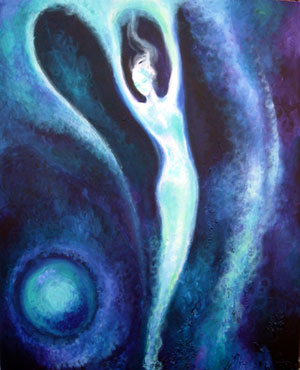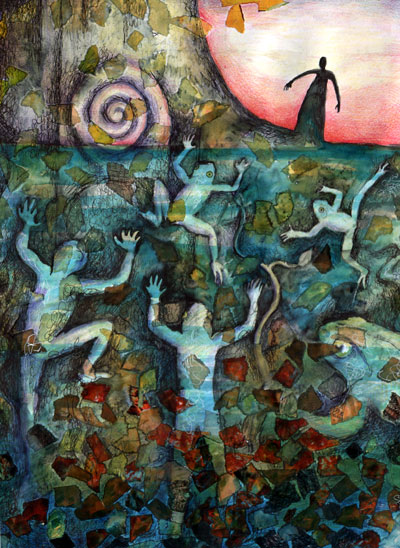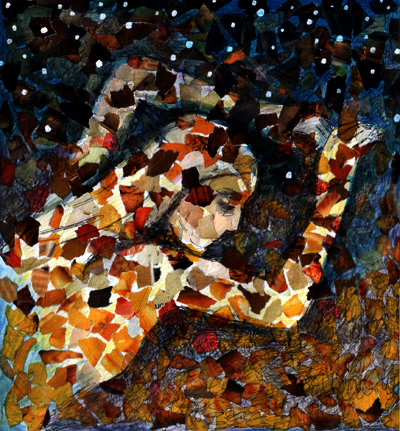“In the woods, the spirit can stretch and change, can move like a willow, elastic in spring…In the woods, you may be lost in your thoughts, willingly lost, creatively lost, which allows you to enter the mind’s forests, where the wind within can blow you somewhere sought and as yet unfound….In the forest is a child. But inside the child, will always be the forest. Breathe the forest deeply enough in childhood, and the birds will still be singing seventy years on.”
From Forests of the Mind by Jay Griffiths
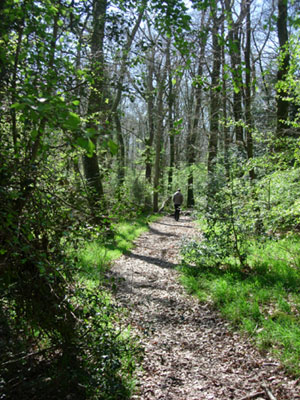 Here in the UK, it’s Spring and I’ve been out in the woods enjoying it. Woodland flowers are blooming and birds are singing their hearts out. A week ago, while wandering a wood near Brighton, I watched as a stoat was chased by some very protective rabbits; it was a real wildlife treat!
Here in the UK, it’s Spring and I’ve been out in the woods enjoying it. Woodland flowers are blooming and birds are singing their hearts out. A week ago, while wandering a wood near Brighton, I watched as a stoat was chased by some very protective rabbits; it was a real wildlife treat!
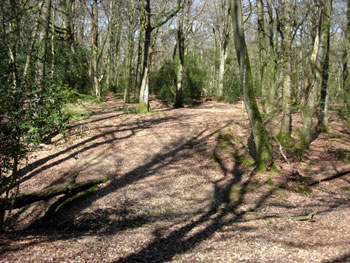 The other day, Kevin and I ventured further to two of my favourite woods in West Sussex, The Mens and Ebernoe Common both owned by The Sussex Wildlife Trust.
The other day, Kevin and I ventured further to two of my favourite woods in West Sussex, The Mens and Ebernoe Common both owned by The Sussex Wildlife Trust.
The Mens is an open beech and oak wood, with other trees such as holly and midland hawthorn. I chose to take photos looking into the light which streamed through the open canopy and Spring growth. Great tits dominated on the bird front, but we also saw or heard woodpeckers, treecreepers and nuthatches. The paths were soft with last year’s leaflitter and some slopes were dotted with wood spurge and lesser celandine. We had the wood to ourselves and one of its beauties is that it’s big enough to get lost in! But I’ve never been truly lost…in a wood…yet.
 Ebernoe Common is perhaps my favourite wood. It’s here that I come to see woodland butterflies such as silver-washed fritillaries and a plethora of grasshoppers and crickets in Summer, or to do bat surveys and enjoy the sun sinking mauve over Furnace Pond. On our recent visit, we spent some time around the lake watching orange tip butterflies mating or laying eggs on cuckoo flowers on the wet margins.
Ebernoe Common is perhaps my favourite wood. It’s here that I come to see woodland butterflies such as silver-washed fritillaries and a plethora of grasshoppers and crickets in Summer, or to do bat surveys and enjoy the sun sinking mauve over Furnace Pond. On our recent visit, we spent some time around the lake watching orange tip butterflies mating or laying eggs on cuckoo flowers on the wet margins.

But besides the wildlife, and escaping the town, I agree with Jeanette Winterson that woods
“..are places to dream….There is a wooded place in our heads….the forest holds the memory of other lives and other ways of life…is one vast memory system that binds with our own.”
The bluebells are coming out now. If you’re interested in finding a wood near you check out the Visitwoods website.
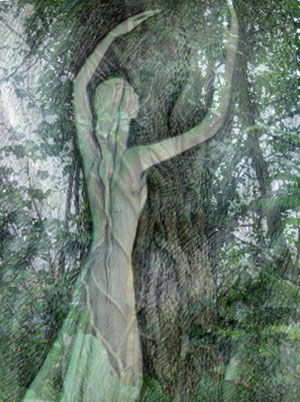
Lost by David Wagoner.
Stand still. The trees ahead and bushes beside you
Are not lost. Wherever you are is called Here,
And you must treat it as a powerful stranger,
Must ask permission to know it and be known.
The forest breathes. Listen. It answers,
I have made this place around you,
If you leave it you may come back again, saying Here.
No two trees are the same to Raven.
No two branches are the same to Wren.
If what a tree or a bush does is lost on you,
You are surely lost. Stand still. The forest knows
Where you are. You must let it find you.
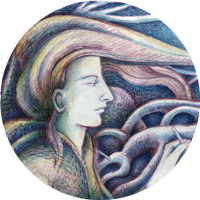

 While in Nepal, I buried a little packet a friend gave me on top of Poon Hill under the gaze of the Dhauligiri Massif. Now my friend will be taking a voyage back across the Atlantic from Brazil, a true dream trip. When she goes, I’ll be giving her a gift to the ocean, a bottle with a picture inside that I hope will be washed up and found one day. She said she’ll drop it in the mid Atlantic so it might get caught by the
While in Nepal, I buried a little packet a friend gave me on top of Poon Hill under the gaze of the Dhauligiri Massif. Now my friend will be taking a voyage back across the Atlantic from Brazil, a true dream trip. When she goes, I’ll be giving her a gift to the ocean, a bottle with a picture inside that I hope will be washed up and found one day. She said she’ll drop it in the mid Atlantic so it might get caught by the  I have been musing on loss and ‘lost’ recently, (especially after reading Rebecca Solnit’s Field Guide to Getting Lost.) I’ve also been adrift on an unknown sea of ships, wrecks, dreams and memories. While drawing the little picture for the bottle, I thought of my mother and how I would draw little pictures for her. I guess my mother is connected to the sea and loss, dreams and all those fragmented memories that keep coming back to me. Perhaps that’s why I’m looking into the artwork of
I have been musing on loss and ‘lost’ recently, (especially after reading Rebecca Solnit’s Field Guide to Getting Lost.) I’ve also been adrift on an unknown sea of ships, wrecks, dreams and memories. While drawing the little picture for the bottle, I thought of my mother and how I would draw little pictures for her. I guess my mother is connected to the sea and loss, dreams and all those fragmented memories that keep coming back to me. Perhaps that’s why I’m looking into the artwork of 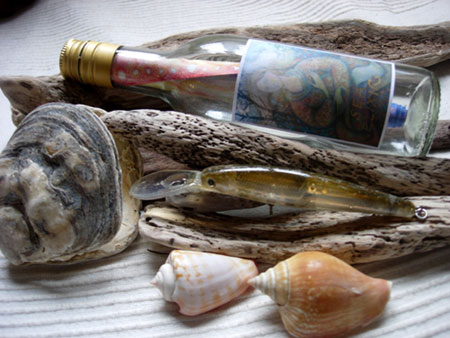
 During an online search I learnt about the crystal
During an online search I learnt about the crystal 
 Poon Hill at dawn. A torchlit procession up there. I buried a friend’s gift to the mountains in sight of the impressive
Poon Hill at dawn. A torchlit procession up there. I buried a friend’s gift to the mountains in sight of the impressive 
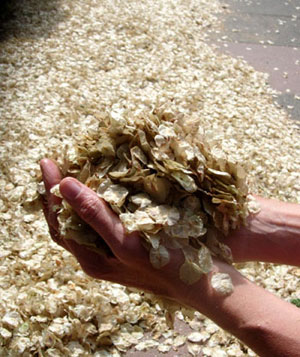 Thousands of elm seeds have fallen in great drifts in my street.
Thousands of elm seeds have fallen in great drifts in my street.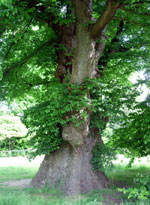

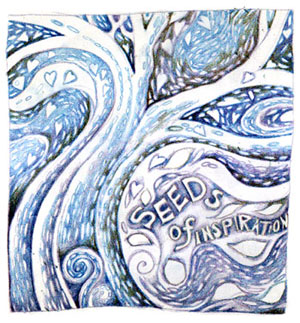

 Cut into Windover Hill in the South Downs, is a giant figure known as The Long Man of Wilmington. He is one of two hill figures in Sussex, the other being a white horse. On a grey day soon after Christmas, I took a walk to the Long Man to take his photo in the snow, a “Ghost Man” on the hillside.
Cut into Windover Hill in the South Downs, is a giant figure known as The Long Man of Wilmington. He is one of two hill figures in Sussex, the other being a white horse. On a grey day soon after Christmas, I took a walk to the Long Man to take his photo in the snow, a “Ghost Man” on the hillside.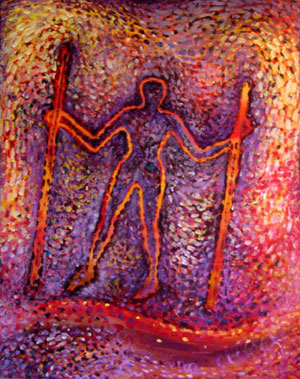 The staves may represent the “gates of dawn”, or a gate through which he is passing to either heaven or the underworld. Perhaps there once was a real giant and the hill figure is a memorial to him. Another story says that there was once another giant who lived nearby on Firle Beacon. A battle started between the two, rocks were thrown and the Long Man was killed. Perhaps the giant was a protector of the area, created to frighten people away from important flint mines and burial mounds. According to local folklore, King Arthur fought and won a battle at Flossenden on a nearby hill-top, where there are supposedly entrenchments and a cave.
The staves may represent the “gates of dawn”, or a gate through which he is passing to either heaven or the underworld. Perhaps there once was a real giant and the hill figure is a memorial to him. Another story says that there was once another giant who lived nearby on Firle Beacon. A battle started between the two, rocks were thrown and the Long Man was killed. Perhaps the giant was a protector of the area, created to frighten people away from important flint mines and burial mounds. According to local folklore, King Arthur fought and won a battle at Flossenden on a nearby hill-top, where there are supposedly entrenchments and a cave.
